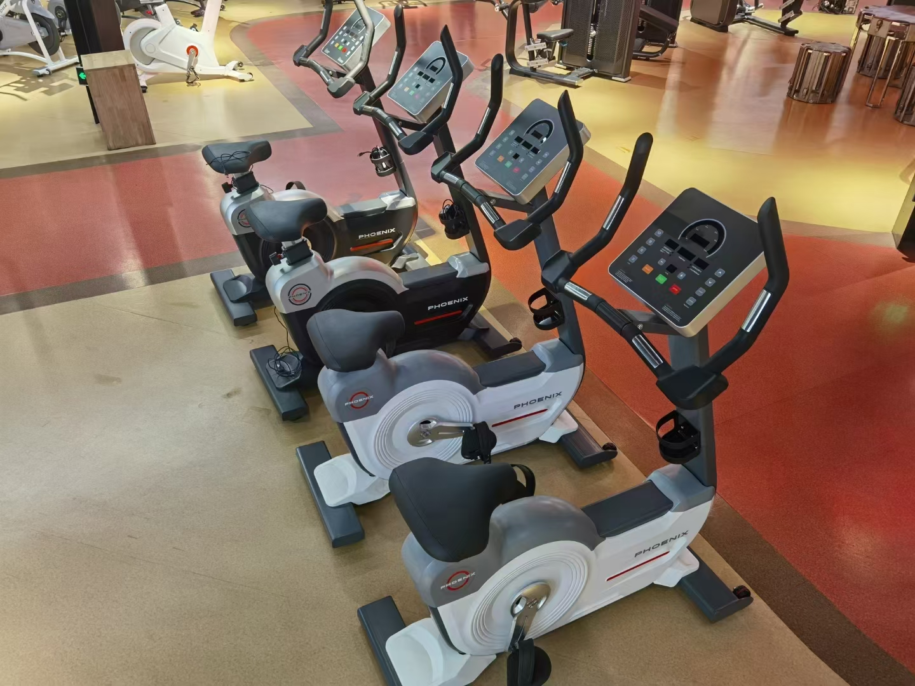An exercise bicycle, often referred to as a stationary bike, is one of the most popular fitness machines used for cardiovascular workouts. It provides a low-impact exercise option that is easy on the joints, yet highly effective in promoting fitness and overall health. Whether you are aiming to lose weight, build endurance, or simply stay active, using an exercise bicycle can help you achieve your fitness goals. This article explores the key benefits of exercising on a stationary bike and offers tips to make your workouts more effective.
Benefits of Using an Exercise Bicycle
1. Cardiovascular Health Improvement
Regular cycling on an exercise bicycle can significantly enhance cardiovascular health. By engaging in sustained aerobic activity, you increase your heart rate, which helps to improve the efficiency of your heart and lungs. Over time, this leads to better blood circulation, a reduction in the risk of heart disease, and an overall improvement in cardiovascular fitness.
2. Low-Impact Exercise
One of the biggest advantages of using an exercise bicycle is that it is a low-impact form of exercise. Unlike running or jumping exercises, cycling puts minimal stress on your joints, which makes it an ideal choice for individuals with joint problems or those recovering from injuries. It’s also a great option for older adults who may need a gentler form of exercise.
3. Weight Loss and Fat Burning
Cycling on an exercise bicycle helps burn calories, which can contribute to weight loss when combined with a balanced diet. Depending on your workout intensity, you can burn a significant amount of calories per session. Moreover, the consistent effort involved in cycling targets fat stores, aiding in fat burning and helping to shed excess weight.
4. Muscle Toning and Strength
Riding a stationary bike engages various muscle groups in your body, especially the lower body. Your quadriceps, hamstrings, calves, and glutes are all activated while pedaling, helping to tone and strengthen these muscles. Additionally, maintaining proper posture during cycling engages your core muscles, contributing to better overall muscle definition.
5. Increased Endurance
Cycling regularly on an exercise bicycle can help build endurance, making it easier to engage in other physical activities. Over time, as your cardiovascular and muscular endurance improves, you’ll be able to cycle for longer durations or at higher intensities without feeling fatigued. This improved stamina also translates to better performance in other sports or daily activities.
6. Mental Health Benefits
Exercise, including cycling, is well-known for its positive effects on mental health. Regular cycling helps release endorphins, the body’s natural mood-boosting chemicals. This can help reduce feelings of stress, anxiety, and depression, contributing to overall mental well-being. Additionally, cycling can be a meditative activity that allows you to focus on the rhythm of pedaling, providing a mental break from daily stressors.
7. Convenience and Accessibility
One of the most appealing aspects of using an exercise bicycle is its convenience. Unlike outdoor cycling, which is dependent on weather and road conditions, a stationary bike allows you to work out in the comfort of your home, regardless of external factors. It’s an excellent option for those with a busy schedule or those who prefer indoor workouts.
Tips for an Effective Workout on an Exercise Bicycle
1. Adjust the Seat Height
Ensure that the seat is at the correct height before you begin your workout. If your seat is too high or too low, you may strain your knees or lower back. To check the proper height, sit on the bike and make sure your knees are slightly bent at the lowest pedal position, with a comfortable range of motion throughout the ride.
2. Maintain Proper Posture
Good posture is key to an effective and injury-free workout. Keep your back straight, your shoulders relaxed, and your hands comfortably gripping the handlebars. Avoid slouching, as it can put unnecessary strain on your lower back and neck. Engaging your core will also help improve posture and overall stability while cycling.
3. Warm-Up and Cool Down
Just like any other form of exercise, warming up and cooling down are essential for preventing injuries. Start with a light 5-10 minute warm-up at a slow pace, gradually increasing your speed to prepare your muscles and joints for more intense activity. After your workout, cool down with a slower pace for another 5-10 minutes to bring your heart rate back to normal and help with muscle recovery.
4. Vary Your Workout Routine
To avoid hitting a plateau and to keep your workouts interesting, vary your routine. You can change the intensity, speed, or resistance settings on your exercise bicycle to challenge your muscles and cardiovascular system in different ways. Interval training, where you alternate between high-intensity and low-intensity periods, is a great way to maximize calorie burn and improve both endurance and strength.
5. Monitor Your Heart Rate
Monitoring your heart rate can help you track the effectiveness of your workouts and ensure you’re exercising at the right intensity level. Aim for a target heart rate that falls within 50-85% of your maximum heart rate, depending on your fitness level and goals. Many exercise bicycles have built-in heart rate monitors, or you can use a fitness tracker to keep tabs on your heart rate during your workout.
6. Stay Hydrated
Proper hydration is crucial when engaging in physical activity. Make sure to drink water before, during, and after your workout to maintain optimal performance and prevent dehydration. Dehydration can cause fatigue, muscle cramps, and reduced endurance, so it’s essential to stay hydrated during your cycling sessions.
7. Set Goals and Track Progress
Setting goals and tracking your progress is a great way to stay motivated and measure improvements over time. Whether your goal is to cycle for a certain amount of time, burn a specific number of calories, or increase your resistance level, tracking your achievements can help you stay focused and encouraged.
Conclusion
Using an exercise bicycle provides numerous benefits, from improving cardiovascular health and endurance to aiding in weight loss and muscle toning. With its low-impact nature and versatility, it is suitable for people of all fitness levels. By following the right tips and techniques, you can make the most of your cycling workouts, ensuring they are effective, safe, and enjoyable. Whether you’re a beginner or a seasoned cyclist, incorporating the exercise bicycle into your fitness routine can help you achieve your health and wellness goals.










